The Ministry of Defence has confirmed that further announcements regarding the Type 83 destroyer programme will follow the completion of the ongoing Strategic Defence Review.
Maria Eagle, Minister of State for Defence, responded to a parliamentary question from Graeme Downie MP, stating that “the next stage of the Type 83 Destroyer programme, which is one element of the Future Air Dominance System (FADS) programme, will be announced following the completion of the Strategic Defence Review.”
The Type 83 will replace the Royal Navy’s current Type 45 destroyers and form the backbone of the UK’s future maritime air and missile defence capability. It is part of the broader FADS programme, designed to ensure the UK maintains an advanced air defence capability into the 2040s and beyond.
Earlier updates confirmed that the programme had officially entered its concept phase, with Eagle previously stating, “The Type 83 Destroyer will be the core of the Future Air Dominance System (FADS) programme, which has commenced its concept phase. FADS will replace the UK’s present Maritime Air Defence Capability vested in the Type 45 Destroyer Programme.”
What We Know About the Type 83 Destroyer
While still in the early concept phase, the Type 83 is expected to be a significantly larger and more capable platform than its predecessor, equipped to counter advanced missile threats, including hypersonic weapons.
A previous MoD update described the FADS programme, including Type 83, as:
“A transformative multi-domain programme that will provide Integrated Air and Missile Defence against the toughest of threats in the air domain, and strike against the hardest of targets in air, land, and maritime domains.”
Industry engagement has already begun, with the MoD holding a Market Engagement Event (MEE) in December 2024 to gather input from defence contractors on the project’s direction.
According to the MoD’s Defence Equipment & Support (DE&S) team, the engagement was designed to:
“Gain a greater understanding of the marketplace capabilities, capacity, and skills regarding the potential requirement(s); understand where industry sees challenges and opportunities in relation to the potential requirement(s).”
A further session may be held in early 2025 as the Royal Navy refines its requirements.
A Successor to the Type 45 Destroyer
The Type 45 destroyers, which currently serve as the Royal Navy’s primary air defence warships, will be phased out in favour of the Type 83s.
A concept image that surfaced in 2023, though unofficial, hinted at a vessel larger than the Type 45, potentially closer in size to the US Navy’s Zumwalt-class destroyers or China’s Type 055 destroyers. While exact specifications remain unclear, it is widely expected that the Type 83 will feature:
- Advanced radar and sensor systems, potentially including next-generation phased array radars.
- Integrated Air and Missile Defence (IAMD) capability, optimised to defend against ballistic and hypersonic missile threats.
- A significant missile payload, likely utilising Mk 41 vertical launch systems (VLS) to house a combination of air defence, land attack, and anti-ship missiles.
- A future-proofed power generation system, capable of supporting directed energy weapons (lasers) and railgun technology.
When Will the Type 83 Enter Service?
The first Type 83 destroyer is expected to enter service in the latter half of the 2030s, with a potential Initial Operating Capability (IOC) in the late 2030s or early 2040s.
Given the extended timelines involved in ship design and procurement, it remains uncertain how many Type 83 destroyers will be built or whether the Royal Navy will receive a one-for-one replacement of its six Type 45s.
The government has previously indicated that the Strategic Defence Review will determine the final force structure, with decisions on fleet size and capabilities expected later this decade.
With the concept phase now officially underway, the next major milestone for the Type 83 programme will be the selection of key design partners and initial capability requirements, leading to a main procurement contract.
As the UK’s largest and most advanced future surface combatant, the Type 83 will define the Royal Navy’s air defence capabilities for the second half of the 21st century.


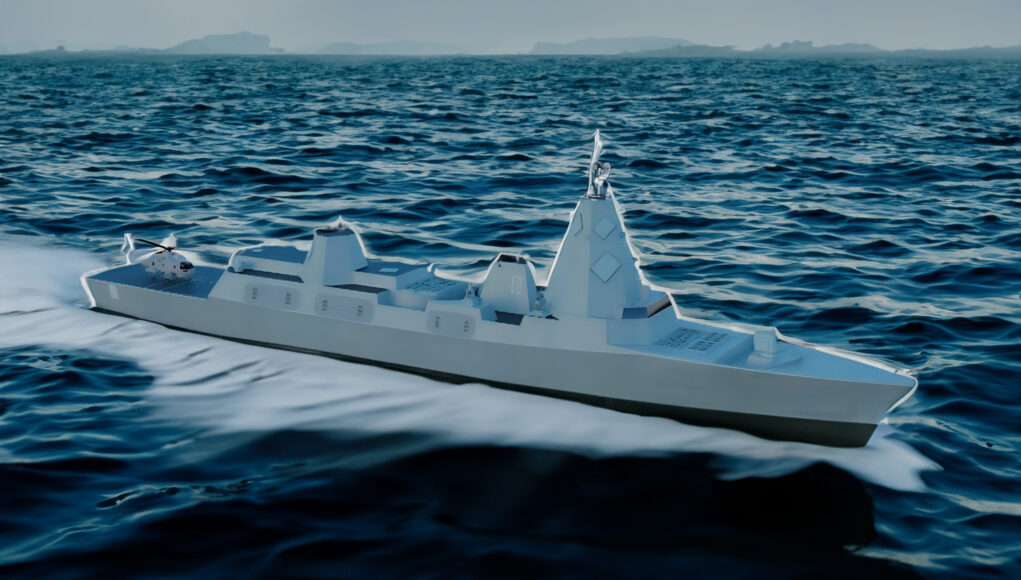

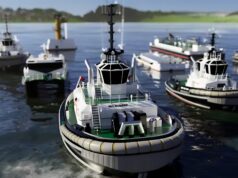
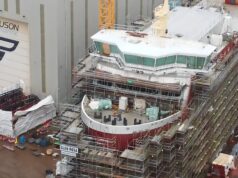
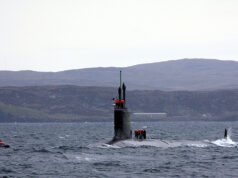
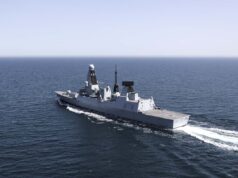

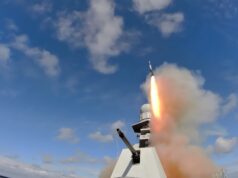
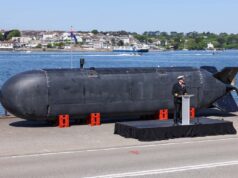
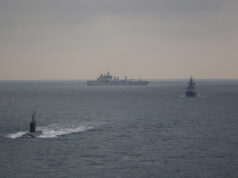
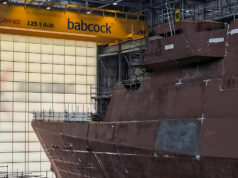

Ships seem to spend years in the Concept phase these days. I think the T32 programme is offcially still there. An announcement that Type 83 will only spend six months in Concept would a real MOD achievement: probably a bigger achievement than actually succeding. You have to try before you can succeed.
It’s not a new thing. The Arleigh Burkes where in what we’d call the concept stage for about six years.
I am making a good salary from home $4580-$5240/week , which is amazing under a year ago I was jobless in a horrible economy. I thank God every day I was blessed with these instructions and now its my duty to pay it forward and share it with Everyone, Here is I started_______ work43.marketingℱ
please don’t copy”ℱ” In Url Thanks
If the T26 build is being accelerated could this then allow for the T83 being brought forward by a few years? Late 2030s early 2040s seems so far away. And any Norwegian T26 and any additional RN orders may then need to be farmed out more to other UK yards to squeeze it all in if BAE is the sole AAW Destroyer manufacturer. Any possibility then of an interim purchase of an enhanced AAW T31/A140 build to complement the T45s as the even the Polish A140s look pretty useful?
FADS has just gone into concept. In the unlikely event it only stays there one year, that means we could start a competition next year for preliminary designs, which will take us to the start of 2027. Detail design will take 3 years, probably more unless mind-changing admirals can be excluded completely, with just a few brave Navy souls seconded as full-time advisors to the competition winner (aka BAES). Cash limiting the cost up front for the first batch could also speed up the design. I’m told design can be done a lot faster these days, but I don’t believe it will be. Nevertheless, that’s early 2030. Another year to scout out some money because until the design is accepted the budget won’t be allocated (also, possibly a new government in 2029). So maybe April 2031 for contract. Then nine years from contract to operation. 2041.
There are places where that could be speeded up a bit, but I don’t think accelerating the Type 26s would reduce a prediction of late 2030 or early 40s.
*2040 not 2041. Typo.
No chance of interim AAW
“The Type 45 destroyers, which currently serve as the Royal Navy’s primary air defence warships, will be phased out in favour of the Type 83s”.
I would say from the sense of urgency that has now started to permeate outwards that the two classes will serve side by side. T45s are big hulls that have loads of life left in them as well have having the capacity to be upgraded.
“A concept image that surfaced in 2023, though unofficial, hinted at a vessel larger than the Type 45, potentially closer in size to the US Navy’s Zumwalt-class destroyers or China’s Type 055 destroyers. While exact specifications remain unclear, it is widely expected that the Type 83 will feature:”
Let’s hope that size is the only thing it shares with the Zumwalt. I’m unconvinced by the Chinese 055s as they have such a huge crew that there cannot be full systems integration.
“Advanced radar and sensor systems, potentially including next-generation phased array radars.”
Nothing is really known about this – as I have said before it should be a hybrid system with a high mast rotating radar looking for skimmers and a lower planar radar system that can look up probably combined with a medium resolution volume search radar. Much better off using three signficnalty different and optimised radars for each of the functions and then digitally combining the outputs.
“A significant missile payload, likely utilising Mk 41 vertical launch systems (VLS) to house a combination of air defence, land attack, and anti-ship missiles.”
I doubt LM are on speed dial for Mk41 given the Tangerine Toddlers outbursts. I would be surprised if we are not looking at an indigenous program that enables us to control weapons integration and software as well as avoiding the French control of SYLVER. If you had asked the question three months ago I would have said Mk41 was the favoured solution without question. Those assumptions have been rocked.
“A future-proofed power generation system, capable of supporting directed energy weapons (lasers) and railgun technology.”
T45 already has two 21MW GTs [plus the uprated DGs] so there is loads of power on board for DE radar and whatever else anyone might fancy.
I agree the RN actually has two mutually exclusive needs with the T83
1) Mass.. the reduction to 6 AAW was a massive mistake, exquisite capability cannot replace mass as: A) the laws of time and space mean it 1 hull can only be In one place, two hulls can be in two places..that means you can either extend your AAW screen by sending one ship further down the threat axis or protect two groups or places at once. B) if you have 2 hulls and one is mission killed or just breaks you still have 50% of your capabilities.. loss that one exquisite ship you loss it all.
This means in reality the RN needs to be able to deploy around 4 AAW platforms at any one time.. 2 for the CBG, 1 for the amphibious/littoral group and one for key choke points.. so that is a mass of 10-12 AAW platforms.
2) exquisite capability to defend the carrier CBG. The RN needs at least one do everything to the maximum capability platform to support the CBG.. so full ABM capability, hypersonic capacity, large scale high end attack with cruise missiles. In reality the Italians have set the standard for what this is.. the weight and power generation needs of the new generation radars linked with around 100 AAW missiles gives you a 13,000 to 14,000 ton hull. But the RN cannot afford to build 10-12 of those.
So I think the solution is obviously keep the T45s running into the late 40s early 50s and build 4 13,000 ton essentially all singing all dancing cruise/heavy destroyers to support the carriers. Then in the 2040s start building a direct T45 replacement ( a mid capacity AAW destroyer in the 7000 to 8000 ton range) and build 6-8 of those.
Precisely.
A full fat and half fat combined capability.
The snag is the missing two T45s.
As ideally you deploy a T83 and a T45 [or two] with a CSG.
The T31 is a nice big hull that could presumably be adapted to be a kind of second-tier AAW platform. The danger is the beancounters deciding it is good enough to do the job and cancelling the T83.
The SDR could fix that ‘snag’ by ordering 2 or 3 more Arrowhead hulls kitted out as AAW destroyers, maybe even with ASW machinery rafting. NS200, Mk41, Camm-ER and MR. An AB at Aldi middle isle prices. If we also bought a few Kongsberg Vanguards as MCM motherships / OPVs the RN would look a lot more balanced and capable fleet without breaking the bank.
Hope so.
The RN is only just getting by with 6 T45’s.
With SSBN, only one 1 available to deploy out of 4, taking into account the age of the vessels which need more maintenance and refits. 6 T83’s needs to be minimum?
Makes you wonder if the SDR, given its focus on air defence, will see the CAMM-MR project expanded to give a more rounded, more capable medium range SAM. Making it two stage would be a good start.
Maybe CAMM-LR or CAMM-EXLR will be come a thing?
The naming convention appears to point towards that eventuality?
George and co other than overseas announcements you may as well put your feet up and put the Kettle on ! Other than progress on existing projects you could save some time and just have a standard Cut and paste Headline for all major future announcements regarding UK Defence.
“Minister confirms zero public announcement of any progress on xxxxxxxxxx (insert item) till after SDR”
Sorry if this is a bit tongue in cheek but it’s down to my Gallovidian sense of humour. I just can’t fathom why there is such a lack of urgency, if they are not very careful they’ll make their announcements and find what ever they want to buy involves being at the back of a lengthening queue.
Oh and absolutely loved the T26 bit yesterday, can we have something on the T31 pretty please (up to date progress photos would be nice) 🙄
OK, no decisions are being made on anything it seems until the SDR reports.
So surely someone knows when that is likely to report..? All it would take is three or four little words, e.g. in late spring..! We need to know that something is actually happening and their is a plan of sorts, that we are not just drifting along while the so called grown ups argue with each other. Otherwise how can anyone be accountable.
Cheers CR
I read suggestions that it is finished and sitting on Starmer’s desk. Maybe it still contains dependent political options/ uncertainties : Reeves finance statement; Trump’s Ukraine deal, Norwegian order for T26, Turkish order for Typhoon, Chagos?
More likely the recommendations are demanding more money than they are able/willing to provide…
Whatever the reason he/they need to pull their fingers out and get on with it, time is a commodity that obeys no one. IF Trump gives too much away in his peace deal Putin will be back for more in about 4 years time I recon – seems to be about the average timeframe between his ‘adventures’ – so the UK and Europe need to be ready or as ready as they can be.
Cheers CR
Cheers CR
Utterly depressing how long these things take, it has been years since it was first announced the T45 would be replaced. I wonder if the team only meet for an afternoon once a month.
Future proof power generation; Mmmm I wonder if that is the reason the MoD/RN is looking at nuclear power generation in surface ships. A Rolls Royce micro reactor seems to be containerised transportable and able to plug into a local network. A micro reactor can generate upto 10MW of power so it should be enough for laser/rail gun possibly even E-MAL.
T45 has 2 x 21MW of GT so I’m not sure what a micro reactor adds other than a lot of cost.
Unless you are suggesting cruising on the micro reactor and boosting on the GTs?
That might be an interesting propulsion method for ASW T31B2. Nuclear electric, 4x 10MW with batteries for intermediary backup and hotel. Not sure if it would need a nuclear engineer onboard though. I’m told they are in short supply. The UK Space Agency is funding the micro-reactor programme and RR have said it expects to get them ready for 2029. Perfect timing for T31B2.
That would turn T31B2 into a £1Bn ship
You are probably right, but I live hope that those microreactors won’t be as costly as some fear. US companies are floating costs in the several tens of millions as one off builds. If we decided to buy twenty of them for T31B2s, that could kickstart factory production and significantly lower unit costs, with a lot of export potential. If costs could be brought down to £10m a pop, although that’s probably far more than diesel, it would be worth it. I wonder how much fuel costs are for frigates for 10 years. (Yes, I’m conveniently ignoring disposal costs in my optimism, but that’s worked for nuclear power for the last half century. Then there’s upgrading of the frigate dry docks to meet regulatory standards, and new training regimes required for only 5 ships…)
As I write this, I can feel all my optimism draining away. 😢
Hi Supportive hows life. I know I’ve said 10MW but that is what RR have now, not what they are working on. It looks like RR seem to be working on the concepts of Micro reactors with even more power, SMR Reactors 0.5GW then the big ones like the PWR3.
Anyway as much as I like the idea of cruising on a micro reactor I’m not. Ships electronics, computers weapons especially when lasers and rail guns come into reality will use lots of power. Power that will be needed at the flick of a switch without impacting the power needed to move the ship. This will mean that the ship will need to get much bigger to house a bigger power generating plant. With a bigger ship you then need a bigger power plant to move the thing. In the end you end up chasing your tail. With a Micro reactor it looks like RR can fit this into a 20ft container which the way I am thinking could be dropped into the ship and connected up to the main switchboard. That way the GT’s and MTU’s deal with moving the ship whilst the Micro reactors would deal with the ships electronics,weapons etc. Basically a method of boosting the ships electric supply without straining the main powerplant. Also you need to think about everything a GT needs, fuel meaning fuel tanks, air intake, and air intake fans, air extraction fans, heat extraction, electrical start up power supply, noise suppression, cooling systems etc. A micro reactor seems to have this in a closed unit.
Jon mentioned nuclear engineers, from my understanding the micro reactor is a sealed unit, you don’t get into it. So I suppose you would need nuclear power technical operators. If the ship is designed correctly if all else fails disconnect from the ships power grid and overboard it goes into the deep blue and fill the paperwork.
It would be intresting to find out the drain on an MTU or GT when they not only have to move the ship but fire 2-4 lasers for 15 minutes air defence. However testing has not done that type of test as yet.
The issue is BDR.
Even the Russian put the reactors of their surface vessels inside 50mm armoured compartments.
50mm won’t help much against a missile and that would be the argument against a containerised reactor in a surface ship.
It might be possible to put a reactor in a top opening flask armoured like a VLS that was part of the ships structure.
In reality the Italians have set the standard for how big these are going to need to be and that’s massive.. 13,000 -14,000 tons if you want and exquisite platform and for the CBG the RN will want/need that exquisite platform.
But they also need mass… in reality the RN need to be able to deploy around 4 AAW platforms at anyone time ( 2 for CBG, 1 for a littoral group and 1 for choke point defence), so that’s 10-12 ships.. clearly the RN is not going to be able to afford 10-12 exquisite 13,000 AAW ships.. so (as supportive pointed out and I agree ) I bet they build about 4 T83s also keep the 6 T45s running into the very late 40s and early 50s then build a set of more modest T45 replacements at 7000 to 8000 tons in the mid 2040s.
I’m not convinced that you need to go much bigger than the existing T45, its roomy, we’ve ironed out the bugs and if you ditch the flight deck and hanger you have a lot of room for VLS. Leveraging an existing design with as much commonality as possible enables the mass you need.
Which would you prefer 4 exquisite Cruisers or 12 pure AAW Destroyers with 100 plus missiles and 57mm gun
Except we want the flight deck and hangar because these ships cannot afford to only do one thing
ABC I believe a lot of the weight on the new Italian destroyer is that they are shifting up on radar as Leonard are developing a new verson of Kronos that is replacing the present Kronos duel band C and X band AESA panels with an S band Kronos Quad and X band starfire 3000 set of panels as well as a Kronos power shield L band long range ballistic missile radar ( 1500km range) …that’s many tons of radar and a huge energy requirement compared to a T45 or even something like a burkes set.
I’m thinking a 10 to 11 thousand ton ship is the likely out me. You can’t lose the flight deck that would be madness what with everything from simple cross ship transfer and flexibility to serious drone exploitation that’s going to be incredibly advanced by the time these ships hit water. They will because me a vital part of any sizeable ship’s repertoire. However actual size in the end will I’m sure be dictated by whatever conclusions about technology and practicality combinations hit home over the next 12 to 18 months as achievable I suspect.
If the T83 is going to actually be more of a missile cruiser, then 6 for a like by like replacement is a good deal for the RN. In reality these ships should always be part of a battlegroup. More type 26s and 31s are what the RN desperately needs.
I think a balance between cost and capabilities is needed. While a 10,000 tonne Cruiser sound’s ideal the Royal Navy won’t be getting 6 of them.
The cost of a 10kt cruiser won’t be much different to an 8kt cruiser.
IRL T45 isn’t much off 9,000 short tons anyway.
The hull isn’t the expensive bit.
It is the systems.
Adding a well for a second 48 slot VLS isn’t where the money would go.
So basically a lengthened T45 with space for a second VLS would do the job?
SDR is likely on Uncle Kiers desk now…But it makes such awful reading that he sitting on it and playing wait and see…A reset of global defence aspiration and capability for the UK will be painful all round but it has to be faced.The new regime in Washington has to have major impact also.Type 83s will eventually cost £1.3/1.4 bn a time?..So RN wont get 6 or even 4 ,perhaps 3… and not until late 2030s maybe…Type 32 will probably still be in development by then..The Type 31s will be worked to death like the T23s before them and the T26s tied up in the Atlantic against Russia or diverted to Scandinavia..Present and future for the RN ..3 WORDS..NOT ENOUGH HULLS!!
Yes, the SDR probably makes unpalatable reading. Aspiration for San Antonio or Canberra style MRSS are likely fiction. We will get commercial conversion littoral ships like MV Ocean trader if we are lucky. T83 will be kicked into the long grass while the T31 hull could be developed and exploited into sound if not spectacular variant platforms. Reminds me of British Rail HS125…..you can get a lot out of performance out of diesel technology quite cheaply if you set your mind to it. Quantity has a quality all of its own.
The 125s were amazing trains again our best stuff like thenm and Canberras tend to be stop gaps that end up as long term great platforms perhaps because they aren’t over designed. Sadly the 125s were so good they pretty much destroyed our railway design business, as similarly has happened in the military too.
Point taken on the risk of losing design capability. That said you can’t do anything of you are not there, so I’m in the we need more not perfect but credible hulls.
For their time the 125’s were an incredible bit of typical British engineering. Of the brilliant ideas slightly kludged vein.
The main issue was the sheer weight of the power cars and the fact the rear one was under utilised.
The concept really should have evolved, TGV style, to driven wheels on every carriage to remove the weight of the traction motors from the power cars.
The two issues being the terrible acceleration and deceleration distances and the loadings from the power cars on a track radius.
However, there was almost zero point in developing anything faster as there was, and indeed is, so little track in the UK that allows even 125mph running. Pathetically little in fact if you have ever been on a ‘fast’ train with the GPS on your phone switched on.
As an exercise, it would be good to compare what other Navies are developing for their future destroyers.
1. China – Type 055 Destroyer – currently in service 8, 4 in build and 16 more planned
• The Chinese Type 055 is the PLAN’s premier surface warship. It has a standard displacement of 11,000t, is 180m long, with a beam of 20m and a draught of 6.6m.
• It is powered by a COGAG (Combined gas turbine and gas turbine) and has a range of around 5000 nautical miles at 12kn.
• It has both four fixed panel AESA S band and X band radars.
• For armament it has 112 VLS cells (64 forward and 48 aft), that contain long range surface to air missiles based on the Russian S300, anti-ship cruise and ballistic missiles, land attack missiles and anti-submarine missiles. Some of these cells are 9m long, so they can house the ballistic missiles, but also HQ-19, which is comparable to S400/500 missiles for anti-ballistic missile defence.
• For short range air defence it has a 24 cell HQ10, which is very similar to the Rolling Airframe Missile (RAM) and a 30mm 11 barrelled Gatling gun CIWS.
• It carries a single 130mm main gun
• For ASW it has two sets of triple torpedo tubes and its hangar can house two medium sized helicopters like the Z9 or Z20.
• With a bow mounted and variable depth and towed array sonar
2. USA – DDG(X) – Initial production starting 2032 to 2034 for an initial order of 28, estimated cost per ship is $4.4B
• The DDG(X) is the replacement for the Areligh Burke destroyers. The ship’s systems and armament baseline for the initial DDG(X) will be the same or similar to the Flight 3 Arleigh Burkes (AB).
• Projected displacement is 13500t. The USN have not released any information on the ships dimensions other than projected displacement. Based on the Flight 3 AB’s which have a displacement of 9500t and a length of 155.3m, with a beam of 20m and a draught of 9.4m. I’d expect the DDG(X) to be as long as the Chinese Type 055.
• The USN are looking at generating a similar electrical capacity as the Zumwalt’s 75MW compared to the AB’s. This is so the ship can power a laser weapon as well as using larger SPY-6 arrays compared to the Flight 3 AB.
• The ABs have quite a short range compared to other similar ships at 4400 nautical miles. With the DDG(X), the USN require it to have a 50% better range (so over 6500 nmi). Which they hope will be achieved by using an integrated power system similar to the Zumwalt.
• Armament wise, the ship is expected to start with 96 VLS cells as per the AB. But the USN have already talked about including a mid-section mission module. That could like the T26’s multi-mission bay or incorporate additional VLS cells.
• The USN are also looking at replacing some of the 32 Mk41 cells with 12 of the larger missile launch cells. That will hold the intermediate range conventional prompt strike hypersonic missile. But can also be used to quad pack SM-6.
• For close in air defence they are looking at two RAMs mounted either side of the ship. Plus for drone defence directed energy weapon (laser/microwave). But have also re-instigated the guided hypervelocity projectile (HVP) for the 5” gun. In some renditions of the ship, they have shown it without a 5” gun. But that was before the lessons learned from the Red Sea Operations, where the 5” was being used to take out drones. So I’d bet it stays as a requirement.
• The USN have already said the baseline ship will be equipped with the SPY-6 radar. But unlike the Flight 3 ABs. They want an even larger panel array fitted. They have also said they will have a fixed multi-panel X-band AESA array.
• If like the ABs, the DDG(X) is multi-role, expect it to have at least the same ASW capabilities.
• The USN have not said what type of air capability the ship will have, though again I’d assume it would at least be the same as the Flight 3ABs.
3. South Korea – Sejong the Great (Batch 2) destroyer – 1 in service 2 in build (all built by 2028)
• The Batch 2 builds on the earlier Batch 1 Sejong class, which is based around the AEGIS combat system and SPY-1D and performs a similar role to the USN’s Arleigh Burke.
• Standard displacement is 8500t, with a length of 170m, a beam of 21.4m and a draught of 6.25m. As per the ABs and Type 055 they use a COGAG power arrangement. They also have a similar range of 5500 nautical miles.
• Main sensor wise they use the old fixed panel Passive electronically scanned array (PESA) SPY-1D radar which feeds in to the AEGIS CMS. Which has been upgraded as per the Flight 3 ABs, so it can deal with ballistic threats using SM-3 and L-SAM or SM-6. I haven’t read anywhere that says the Sejong’s will be getting a newer radar. But it will likely be on the cards as the PLAN increases their capabilities.
• Armament wise the ship uses a mix of Mk41 (48) and two types of local VLS (K-VLS 1 (16) and K-VLS-2 (24)), to give a total of 88 cells. That can house short, medium and long range surface to air missiles, anti-ship missiles, land attack cruise and ballistic missiles, plus anti-submarine missiles. The K-VLS-1 is equivalent to the strike length Mk41. Whilst the K-VLS-2 is longer at 9.8m, to fit the ballistic missiles. Both K-VLS can be quad packed.
• The ship also uses 8 containerised anti-ship missiles along with two triple sets of torpedo tubes.
• For close in defence, they have a pair of Phalanx
• The ship’s hangar can accommodate either a pair of Sea Lynx or MH60s Seahawks.
4. South Korea – KDDX destroyer – 1 in build, 6 planned
• This is a new destroyer to supplement the Sejongs. It has been designed with a stealthy hull, as they are expecting North Korea to get a massive boost in arms technology from Russia. But also with China on their doorstep, who is amassing a significant fleet, these ships are expected to go toe to toe with them.
• The KDDX is a smaller ship than the Sejong, but makes greater use of indigenous products and is expected to resemble a large French FDI in overall appearance. The standard displacement is around 7100t, with a length of around 155m, beam 18.8m and draught 9.5m, which is closer to the T45.
• Armament will be predominantly home grown, utilising the K-VLS and K-VLS2 cells. Currently there isn’t a specific number of cells publicised. But in imagery, it shows 3 banks of VLS, possibly around 96 cells.
• Imagery also shows a main gun (5”/76mm) along with a pair of Gatling type CIWS.
• Sensor wise, again it’s predominantly home grown, but includes multiple fixed panel S and X band AESA radars that feed into local produced CMS.
• Due to its size, there may only enough room to hangar one medium sized helicopter.
• According to the South Korean press, the ship will also be fully ASW capable.
5. Italy – DDX destroyer – 4 planned, 1st ship delivered by 2028
• Italy has planned on replacing the two Horizons with four significantly bigger multi-role destroyers.
• The ship will have a displacement of around 10,000t. It is expected to be 175m long, with a beam of 24m and a draught of 9m. However, it is going to be crew heavy, with a projected compliment of nearly 300.
• They are planning on using CODOGAL (combined diesel or gas and electric) to power the ship.
• Armament wise, they are a bit light on their VLS count. Though due to the size of the ship there should be scope in increasing this number. Currently they are planning on using only 48 VLS cells. I have a feeling this number will change following their support of Operations in the Red Sea as part of the Euro task force. So far they have only announced the use of Aster and naval variant of SCALP for the cells. Though they are also including canister launched Teseo Mk2 anti-ship missiles.
• They are including a very heavy gun armament compared to other Navies ships. Where along with a single 127mm main gun, they will have three 76mm 62 cal guns to provide both CIWS and a ranged defence using the combat proven guided DART round. The rearmost 76mm gun will the new Sovraponte mount, which is a non-deck penetration system. The mount holds 76 shells of various types that are selected depending on the target requirement.
• The hangar has been sized to accommodate two EH101s or SH90s.
• Sensor wise, it will have the Thales Smart-L MM AESA L-band radar, along with multiple Kronos fixed panel C and X band AESA radar.
• Again they have said the ship will have a full ASW capability, but haven’t gone into detail.
Observations
4 out of the 5 ships show that they have significantly grown in size over the previous ships. Where now they are of a size that would have been considered a cruiser before it went out of fashion. At least one of the ships is more or less a direct comparison with the current T45, but with a greater VLS count.
The Italian DDG, has by the other ship standards a pretty small VLS count of only 48. Which even against a non-peer threat like the Houthis can be quickly emptied over a couple of days. I can only assume that these cells will be the Sylver VLS cells. At present there is no word if some of the cells will be packed with any of the CAMM variants, only Aster. I’m not sure if CAMM has been integrated with Sylver, being its French owned and they are favouring Aster 15 and 30 only. However, due to the size of the ship, there should be scope of adding additional cells.
The Italian DDG is also coming with a by today’s standards a very heavy gun armament. Whilst the other ships rely on 20/30mm CIWS and a single main gun. It will be interesting to see if the USN DDG(X) will include additional autocannons. As an alternative to dealing with large number of cheap Unmanned surface/air drones.
4 of the ships will use the larger VLS cell, which will hold ballistic missiles for either land attack or anti-ship.
Only the Italian DDG is coming with three primary radars. Where they will likely separate the various tasks for long range volume search, target tracking, horizon scanning and gun direction between the three radar types.
All of the ships are being classed as multi-role, where they will be expected to do anti-air, anti-surface and ASW. All but the smaller KDDX have hangars that can accommodate two medium sized helicopters.
T83 Direction
The RN will need to decide if the ship will be single purpose or multi-role. Making it multi-role will be more expensive, but it can do more tasks and also operate on its own if needed.
I’m positive the RN will be doing operational analysis on the current and future threats (I’ve not included any of the future Russian destroyer designs as they have a habit of producing nice models, but not actually building anything!), then building their requirements around it. There are also lessons to be learned from the recent operations off Yemen, which although against a non-peer threat, were and are a persistent danger to shipping.
The main two are that you need a greater missile magazine depth than 48 for airborne threats. Otherwise you will quickly deplete your magazine and have to retire to a friendly port to rearm. The second is you need a significantly cheaper non-missile method for taking out inexpensive drones. The US Navy proved that the 5” gun with air burst shells was pretty effective. As did the Italian navy with their DART rounds fired by their 76mm guns. In time I’m sure laser and microwave weapons will be used. But we aren’t there yet, and kinetic weapons are still a very effective alternative. As the RN have picked the Mk110 57mm for the T31. Perhaps we should look at fitting along with a 5” at least a pair of these armed with guided rounds, backed up with a pair of Bofors 40mm guns to the T83. To give it a much cheaper option for dealing with close in threats and drones.
Sensor wise, I think the Italian DDG is showing the way forward, using 3 primary radars. It also means having a single mechanically rotating AESA radar saves on a bit of weight compared to three/four fixed panels. Secondly, the medium range radar can use the four fixed panels, but enlarged in area, as they will be lighter than the long range radar panels. Including an X-band radar is a good option, as it will be inherently better for horizon scanning and tracking low/high speed threats against sea and land clutter. But because they are pretty light can be mounted much higher on the main mast to extend the radar horizon.
I have mentioned before that the hangar must be able to accommodate at least two medium sized helicopters. This is predominantly so that the hangar can house at least three Leonardo Proteus sized helicopter drones. With the idea that these drones can be fitted with X-band radar and used as an organic AEW, to extend the radar horizon to over 100km, if it can reach at least 2500ft. Which will then enable the ship to engage air threats over the horizon and beyond the line of sight. Something none of the other ships can do at the moment.
Benchmarking is good. That said, what are these ships for? Are they the new unsinkable pocket battleships- the only safe place to be a crew member? Or maybe a strategic deterrent – global surface raiders with their ballistic missiles? In other respects their offensive armament is nothing special. Are they technology demonstrators; or a solution looking for a problem to solve….like a big amphibious assault group to protect? Is the US anticipating an action replay of Pacific island hopping? The T83 FAD concept phase needs to do a good job, I think.
As we all believe, the T83 will be tasked with providing protection for a carrier group and probably an amphibious group. But, due to the small size of our surface fleet, it will have to be able to do more and work on its own. So yes, set its primary role as air defence, but it must be capable of surface attack, ASW, but also land attack. The issue will be cost, if the USN are estimating that the future DDG(X) is $4B per ship and a T26 is knocking on £1B. I would estimate that the T83 will be between these figures, possibly closer to £2B. Which then puts in to question of how many ships can we afford. Operationally the six T45s have been too few in number, as any long term maintenance serious affects the availability of other ships, especially when two are required for carrier duties. At a minimum I’d say we need 8, but would prefer 10, if two ships are required to protect a carrier.
The US military, especially the USMC do look like they are prioritizing the Pacific against a Chinese threat and how to deal with fortified islands. They are still committed to providing a force into Norway. But the force isn’t as large as it used to be. I can see why the USN planned DDG(X) is going in the design direction it is. As the Arleigh Burke hull is maxed out and they want to increase the missile count as well as introducing the hypersonic missile. Which needs the much larger VLS. But I don’t feel the current released images have taken in to account lessons learned from the Red Sea Operations; i.e. dealing with a non-peer threat that uses a mass of asymmetric and traditional threats against your ship. The ship is going to be very missile heavy, which as the USN have just recently found; gets very expensive really quickly, when dealing with a constant threat.
I personally like the Italian DDG, which by today’s standards is gun heavy. Italy have now combat proven the 76mm and guided Dart combination. Which I feel is the way to go when dealing with asymmetric threats, like suicide drones. But can also be used as a longer ranged CIWS against fast movers as well. Oddly though the DDG is quite missile light, which I find strange. With only 48 Sylver VLS, it doesn’t give you many options to diversify the load out, plus as far as I know it can’t be quad packed with CAMM, as that hasn’t been tested. In a future peer war, the ship with the larger magazine will have the best chances of success, if all other things are equal. Perhaps 96 (2×48) VLS should be seen as the benchmark. But the ship should also be able to cope with swapping out some of the standard strike length VLS for the much bigger VLS that can accommodate ballistic /hypersonic missiles.
I think, therefore I am……confused. Seems to me that T26 in its original conception as global combat ship fulfils the role of singleton for gunboat diplomacy. It has, or could be enhanced to have good AAW self defence and if its VLS held land attack, even hypersonic missiles when it rocks up off your coastline embassy telephones start ringing. Meanwhile T45 is already well on the way to being capable of AAW defence of a task group. So I’m thinking more hulls and networking rather than more vls per hull. Agree your argument that 48 cells is too few. But that said, I’d say T83 need only be 10k evolution of T45 rather than 13k: agree 8 off. And build another batch of T26 with Aster capable targetting.
Phew DavyB, come up for air. Damned if I’m fact checking that! 👏 This is why I love UKDJ., apart from the dross from the “Sea” Eagle. Politico not the missile.🦅🕳️🙃Btth.
I thought by comparing what is being planned by other navies it would add a bit of value to the conversation, especially when people are asking why does the T83 have to be 10,000t or greater.
Spot on. Really nice post and found it very interesting.
Thanks for going to the trouble.
Cheers CR
Wow Davey, I think I will make a fresh pot of tea and a sandwich, hunker down and read for a while. Did all this come from your pen (figuratively)?
Mostly all from OSINT (open source intelligence), using Wiki as the base then fact checking through other sites. But the gist is to have more VLS and still have room for growth etc, you need a bigger ship.
“ Sensor wise, I think the Italian DDG is showing the way forward, using 3 primary radars. It also means having a single mechanically rotating AESA radar saves on a bit of weight compared to three/four fixed panels. Secondly, the medium range radar can use the four fixed panels, but enlarged in area, as they will be lighter than the long range radar panels. Including an X-band radar is a good option, as it will be inherently better for horizon scanning and tracking low/high speed threats against sea and land clutter. But because they are pretty light can be mounted much higher on the main mast to extend the radar horizon.”
Totally agree.
Son of SAMPSON up high for skimmers and gun control a fixed array radar for looking a bit more upwards and a rough volume search radar would seem to me to be the best combo.
Part of the reason for the rough volume search is that it will use less power than the fixed arrays and targets can then be handed off to the most suitable radar.
Agreed, much better for resource management. Plus the long range 3D volume search radar, can spend its time doing that. No need to change the pulse repetition frequencies (PRFs) to match the target’s range. But as its mechanically rotating looking at objects over 400km away. Even when facing hypersonic threats, there will still be plenty of time (relative) to identify the object and classify it as a threat or not, then hand it off to the medium range radar for tracking etc.
It’s the medium (up to 400km)and short range radars that require the most resource time, as they have to track single or multiple targets whose velocity and range changes as they approach the ship. Especially when you not only have track a missile interception but also use the radar for gun laying and shell tracking. It does worry me that ships with a single primary radar; i.e. the T26 and T31 will run out of resource time dealing with multiple types of threat simultaneously.
So much information and speculation. Type 45s have spent so much of their time not at sea, surely their life expectancy can be expended. As for the 2 assault ships, can we not fill them with missiles and use them instead of scrapping them? Apologies if this sounds stupid, but it is fairly logical to me.
JJ,…… Expended? Right lad, back of the class. 😁🙄🕳️Btth
Navy Lookout did an interesting piece a wile ago on a Guided Missile Frigate version of the Hunter Class for the Royal Australian navy; in essence take a Type 26, remove the Mission Bay and add 64 Mk41 VLS tubes. They did speculate on the possibility of it as a Type 83 contender and one can see the plus sides; Existing production line, a (by then) proven hull, commonality with the Type 26… No doubt there would be other factors but it bears considering.
Here is the link if anyone is curious: https://www.navylookout.com/adding-firepower-to-the-type-26-frigate/
WILL THE T83 BE RESTRICTED TO 23.7MTS TO MEET POSSIBLE CANADIAN NEEDS IN THE 2040S?
I meant 23.7mts in beam!